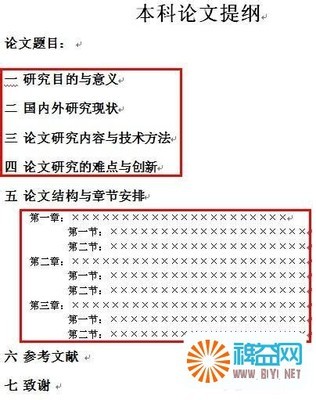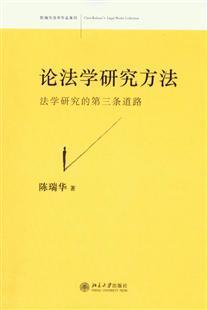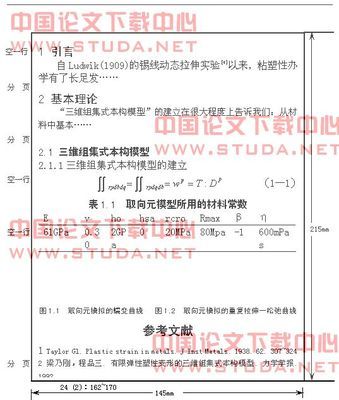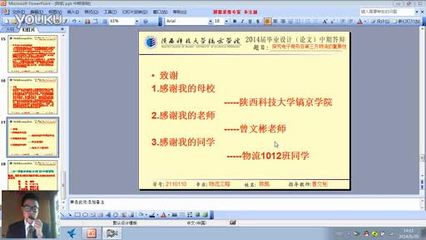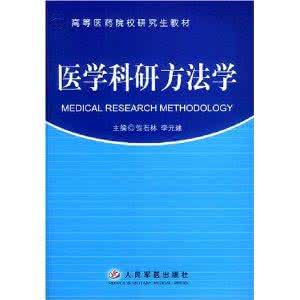
读中学的时候,我最喜欢语文写作,但是提高写作能力是很艰难的事情,很多时候,学习者没有头绪。语文老师上作文课也只是出个题目让大家写作,然后下一次上课读读范文(我的作文),笼统地说要观点明确、结构清楚,要多读多写,但是具体的“秘诀”说不上来。后来参加了《少年文艺》新芽写作函授班。记得那时候的函授教材的第一课就是“立意”。看着教材里面的范文,感到写得非常好,耳目一新。后来虽然也受到专业作家张成新的函授指导,也曾听过《少年文艺》主办的讲座,但是写起文章来还不是很得心应手,主要原因是那时实行应试教育,市场上教学生写作文的书很少,即使有,也是针对考试的作文。一直到了高二、高三,我才在作文上发挥出来,得到区级和市级作文竞赛多个奖项。
应该说,大学里面学习的影视剧艺术、管理学原理、国际贸易、伦理学、大学生心理学、大学生生活导论课程对语文写作是有间接作用的,因为人的阅历多了,知识面拓宽了,就更够更好地认识和描述社会现象,抒发自己的观点。但是,在大学里面我没有看过一本作文书,到了大学里以后,由于没有语文课,几年下来,笔头锈掉了。对于英语学习来说,当时也是应试教育,学习的重点是单词、习惯用语和语法。虽然我承认复旦的教育使我的英语水平上升了很多,但是其实学英语的最高境界就是没有专门的英语课本,或者说什么(比如原版录像、原版小说、杂志、书本)都是英语课本。后来在复旦读了研究生,科研写作得到了初步锻炼,虽然有学术大师指点,但是在科技写作上还是不得心应手。主要原因是:(1)看科研文献太少;(2)练得太少;(3)没有读专业指导写作的书。在读研究生后期的一个收获是发表网络文学,结果笔头又好了,找到感觉了。
出国以后,一开始写的第一篇科研文章(Journal of Catalysis)的初稿还是写得不怎么好。被博导来回修改了好几遍,每一遍都是纸头上一片红的,他在纸头上修改好以后,我再在计算机上进行修改,再给他看。如此这般,反复修改。他又不会当面给我仔细分析这个地方为什么要这么改,因此我主要靠自己的悟性和反复修改了。原创科研论文当然不是经常有的,因为做实验出文章当然慢,所以锻炼的机会也少。我得到最好的锻炼就是写综述。在写综述的过程中阅读了大量文献,基础打得扎实。读书破万卷,下笔如有神嘛。写了几篇综述,一篇比一篇长,一篇比一篇难写。其中第三篇综述,我不做实验整整写了七个月,终于把笔头练出来了。在做博士后的时候,在写作方面就更加有独立性了,基本上我怎么写,就怎么发表的,审稿人都说写得很好。也接触到了一些专门教写作的书籍,在理论知识上得到进步。现在,我介绍一下我的一些关于写科技论文方法学的笼统的体会。
写科技论文,有基本功要求,主要是如何遣词造句,如何用标点符号,如何用缩略语等。关于这一方面的书有:The ACS Style Guide和The Elements of Style。可以说,这些都是科技写作的基本功,如果基本功不扎实,审稿人一眼就看出来了。但是,熟读这些书,把用法都背出来还是远远不够的。除此之外还有一些高级的方法和高级的指导书。曾经读到一些专门介绍科技写作的书,如Wiley出版社出版的The Arts of Scientific Writing,但是读了以后感到没有什么收获。后来认识到要学习到“高级”的写作方法,还是要回归到逻辑学、修辞学、市场营销学(广告学)、科学哲学上面来,从这些非化学的知识里面得到启发。
比如:写文章初稿的时候,一般人是按照自己的思路来写,想怎么写就怎么写。可是,高级的方法就是首先要分析很多问题:Is this research new? Are the data important and interesting? What is the point here? Since there are already a lot of papers, then why should we report our current work? Can the data sufficiently support the conclusions? Are the conclusions consistent with what was reported in the literature?这些问题有点象市场营销学:既然市场上已经有很多同类商品了,为什么我们要生产我们的商品?我们的商品和别人的商品有什么区别?怎么把“市场细分原理”运用到我们商品(文章)的销售中去?有这种critical thinking很重要!记得读博士的时候学习化学动力学,考试的形式之一是从文献里拿一篇文章来讲解。考官就会问:既然别人已经研究过这个体系,那么为什么这篇文章还要研究类似的东西?是它的结论推翻了以前的结论,还是它用了新的仪器方法,还是它的数据更加精确?如果只是数据更加精确,换汤不换药,那么意义在什么地方?
The ACS Style Guide (Third Edition)
p. 28. "What is the function or purpose of this manuscript? Are you describing original and significant research results? Are you reviewing the literature? Are you providing an overview of the topic? Something else?
"How is your work different from that described in other reports on the same subject?
"What is the best format for publishing this manuscript--as a journal article, book, or book chapter? If you choose a journal article, which journal is most appropriate?"
更重要的是,不是从自己的角度分析自己的文章如何如何好,而是从读者角度分析:Why should the reader read my paper? Why should people care about our research? How can our research benefit others' research? What can be done next by others based on our results? What questions will the reader have? If so, then how can we better write our paper to make the points clearer to the reader?这种思维方法如同准备做报告的思维方法一样:做报告之前,重要的不仅仅是想清楚自己要讲什么重要思想,而且还是要想清楚听众是哪些人?他们来听报告,希望得到什么样的信息?怎样讲才是对听众来说有价值的?怎样建立起自己的报告和听众的联系?有的人做报告就是说这个催化剂效果比那个好,听众睡着了。要提炼出更加有通用性的、方法学的东西,这样听众才会有兴趣。(关于这方面的方法学论述见哈佛商学院出版的Presentatios that Persuade and Motivate, 2004年出版。)这也和广告学、消费者心理学的原理类似,即要分析受众关心什么、需要什么。这个要点(从读者角度分析),说起来很简单,但是做起来却很难,因为这是一种很微妙的方法,一般人很难把握。
Don Dunbar写的What You Don't Know Can Keep You Out of College
p. 29. "For essays, showing your best self starts the same way as for interviews: You need to interest both yourself and your reader. But when you're writing, you don't have the reader sitting across from you, showing with his or her reactions whether you are getting through. For this reason, it's a good idea to make sure that the subject you're writing about is not just personal, but universal. Universal doesn't mean "very very big" and "important", it means that anyone--anyone in the universe, I suppose--can connect with it. It's universal the way type O blood is the "universal doner": anyone can receive it."
哈佛商学院出版的Face-to-Face Communicaions for Clarity and Impact
"Don't recite the facts--interpret them! People don't want a recitation. What they want to know is, What sense do you make out of this data? What is the conclusion? Do you have a logical flow in your thought process? And can we see that?"
哈佛商学院出版的Presentatios that Persuade and Motivate
"We humans are at once nobel and selfish. If you appeal soley to our self-interest, we will listen, and perhaps appreciate your words. But we won't respect you. To really get your audience on its feet--and rioting--you have to show them how self-interest and larger principles coincide, such that personal sacrifice is worth it if it becomes necessary."
"You need to find the way in which you and the audience are alike and make those clear early on. Your listeners will then be willing to open themselves to your message. It is way of building trust early on. Audiences want their speakers to have credibility, and they want to be able to trust them. You can't create the latter unless you find a way to conntect with your audience."
"In any communication task, you must understand what your audience needs to know, Your first step--long before you walk into the room--is to ask who the audience is and how they will use the information you provide. Then you can structure your presentation around those needs."
"The audience arrives wondering: Why should we care? Why is this important? So rather than jumping straight into the history of federal housing on Indian reservations, start by describing the current housing crisis. You get your listeners' minds working (How did this come about? How can we solve it?) in ways that give them context for the historical discussion.
Timothy W. Crusius和Carolyn E. Channell写的The Aims of Argument: A Brief Rhetoric
"The first step is to identify possible appeals to your readership. Keep in mind that good persuaders are able to empathize and sympathize with other people, building bridges of commonality and solidarity. To aid in your audience analysis, ask these questions:
-- Who are my readers? How do I define them in terms of age, economic and social class, gender, education, and so forth?
-- What type of attitudes or stances toward my topic do they have?
-- What in their background or daily experiences helps explain their point of view?
-- What are they likely to know my topic?
-- How might they be uninformed or informed about it?
-- How would they they like to see the problem, question, or issue resolved, answered, or handeled? Why?
-- In what larger framework--religious, political, economic--do they place my topic?"
在修改文章的时候,要走到纸头的“背面”去,用审稿人的眼光来挑剔地看自己的文章,给与自己的文章无情的轰击,指出这个不好,那个不清楚,还要做什么实验。带着疑问,去做实验,查文献,进行弥补漏洞。经过几次“反馈回路”,把文章的水平提高。相反,如果对自己的文章非常乐观和自信,有晕轮效应,得到稻草也以为是得到黄金了,那么就投不中。有的人自己做过很多回审稿人,有一种奇妙的感觉,知道投这个杂志应该达到什么样的水平。有的书上说,可以请懂行的人看一下文章,提出尖锐意见,然后进行修改。这里要说的是修改文章从审稿人的角度去修改,很有用处。可以说,很多文章投某个杂志,遭到退稿,其实按照审稿人的意见仔细修改以后,质量还是不错的,但是就是因为已经被退稿了,所以只能投其它杂志了。让我们想一想:假设这样的文章实现能得到懂行人的“模拟审稿意见”,把把脉,然后进行补做实验、精心修改,本来就能一次命中高档次杂志的!
Timothy W. Crusius和Carolyn E. Channell写的The Aims of Argument: A Brief Rhetoric
"Have a dialogue with yourself about your own writing.
1. Ask what you mean by the words that are central to the argument. Have you provided definations when they are needed?
2. Find the reasons, and note their relation to the thesis. Be able to state the connection, ideally, with the word "because": thesis because of reason.
3. Be able to state what assumptions lie behind your thesis and any of your reasons. Ask yourself, What else would someone have to believe to accept this as valid? If your audience is unlikely to share the assumption, then you must add an argument for it--or change your thesis.
4. Look at your comparisons and analogies. Are they persuasive?
5. Look at your evidence. Have you offered facts, expert opinion, illustrations, and so on? Have you presented these in a way that would not raise doubuts but eliminate them?
6. Consider your own bias. What do you stand to gain from advocating the position you take? Is your argument self-serving or truth-serving?
Because it is hard to be objective about your own work, getting a reading from a friend, classmate, teacher, or family member is a good way o see where revision would help. An unfocused reading, however, usually isn't critical enoughl casual readers may applaud the draft woo readily if they agree with the thesis and condemn it if they disagree. Therefore, have your readers use a revision checklist."
The ACS Style Guide (Third Edition)
p. 32. "Does your manuscript as it is written perform the function--new research, literature review, or topic review--that you identified before you began your draft? Do you still think the format you selected--journal article, book, book chapter--is the best choice?
"Have you explained the terms, concepts, and procedures in way that is appropriate to the audience you identified as the start?
"Is your material presented in a logical fashion, so that a reader can easily follow your reasoning?
"Is the manuscript too long? If so, what sections could be eliminated or possibly used as supporting information?
"Do some sections need to be expanded to further clarify the material?
"Are the sentences clear and unambiguous?
"Are all the words spelled correctly and technical terms used appropriately?
"Do you follow generally accepted conversations--such as those in this book--for communicating math and chemistry?
"Could you use another option? You may find it helpful to ask a colleague, preferably one who is not closely involved with the research on which the manuscript is based, and preferably a native English speaker, to read and comment on your manuscript."
写好科技论文,除了满足基本功要求和用读者、审稿人的角度来反思自己文章以外,具体到写作方法来说,这里面也有很多“战法”。这正如拍电影、写小说、下围棋都是有一定方法的一样。关于段落的结构和写法可以见Sheridan Baker的The Practical Stylist。这本书讲到开头要从一个宽泛的事情或者概念收拢到本文具体到讲的东西。这本书还讲了每一段都要有主题句(topics sentence),每一段话讲一个意思,而每一段要有具体的功能!
Timothy W. Crusius和Carolyn E. Channell写的The Aims of Argument: A Brief Rhetoric
"Multiple paragraphs are generally required to develop and support a reason. The key thing to remember about paragraphs is that each one is a unit that performs some function in presenting the case. You ought to be able to say what the function of a given paragraph is--and your reader ought to be able to sense it. Doe it introduce a reason? Does it define a term? Does it support a reason by setting up an analogy? Does another paragraph support the same reason by offering examples or some hard data or an illustrative case?"
"Not all paragraphs need topic sentences to announce their main point. Worry instead about opening each paragraph with some hints that allow readers to recognize the function of the paragraph. For example, some transitional word or phrase could announce to readers that you are turning from one reason to a new one. When you introduce a new reason, be sure that readers can see how it relates to the thesis. Repeating a key word or offering a synonym for one of the words in the thesis is a good idea."
我们经常发现很多写得不好科研论文的段落没有功能,或者一段话有两个功能!现在我来举例说明段落的主题句和功能。22. H.F. Yin, Z. Ma, S.H. Overbury, S. Dai*, Promotion of Au(en)2Cl3-Derived Au/Fumed SiO2 by Treatment with KMnO4, Journal of Physical Chemistry C, in press. <link> http://dx.doi.org/10.1021/jp800797t
这篇文章Introduction的第三段写得很基本,是白话文,但是里面有起承转合在里面:第一句是总起句。接下去,第二句和第三句的功能是举例说明总起句总结的内容:第二句指出在文献中,别人做了什么。这句话用了一个"For one...",表示这句话的功能是举例;第三句指出我们小组和别人以前还报道了什么。既然别人和我们小组做了这个,做了那个,那么为什么发表本文有必要呢?第四句笔锋一转,说:"Nevertheless, even though..."其功能是指出文献(或者说“市场”)中缺乏的东西(或者说“产品”),为第五句埋下伏笔。第五句"Hence, the promotional effect based on a better starting point (i.e., highly active Au/SiO2 synthesized by advanced methods16-22) may be further considered, and new methodologies for the installation of appropriate promoters may be developed."指出根据以上逻辑分析,在“市场”上,什么样的“产品”是需要的。这句话的好处之一是用了"hence"(therefore)显示逻辑关系。好处之二是它“预测”了市场上什么样的东西是需要的。这当然不能乱写,胡乱预测,因为预测的东西,通过做实验,在本文中得到了实现。如果作者不准备报道什么东西,就不要在Introduction里面胡乱预测。也就是说,预测的东西在后面是要有“呼应”的,如果没有呼应,审稿人就会说他被欺骗了。
"Attempts have been made to modify SiO2 supports before loading gold.28-35 For one, Nieuwenhuys and coworkers reported that the T50 (reaction temperature at which 50% of CO molecules are converted to CO2) value of Au/SiO2 in CO oxidation is 240oC, but when SiO2 is modified by CoOx, LaOx, or CeOx and gold is loaded thereafter, the T50 values decrease to 185, 135, and 115oC, respectively, indicating the promotional effect of these additives.28 Our group29,31 and others28,30,32-35 developed Au/TiO2/SiO229-33 and Au/CoOx/SiO234,35 catalysts for CO oxidation. Nevertheless, even though the addition of certain promoters may improve the activity, the promoted catalysts are still not particularly active due to the unadvantageous starting point: the deposition-precipitation method does not work well for making active Au/SiO2 catalysts.29 Hence, the promotional effect based on a better starting point (i.e., highly active Au/SiO2 synthesized by advanced methods16-22) may be further considered, and new methodologies for the installation of appropriate promoters may be developed."
在Results部分,每一段开头都有一个topics sentence,虽然这些句子很简单,也很“原始”,但是至少让审稿人一目了然地知道作者要说什么,在每一段里面用了什么方法实现了什么功能。
3.1. Catalytic Activity in CO oxidation
Figure 2A shows the CO light-off curves of Au/SiO2 synthesized using Au(en)2Cl3 as the precursor.
Figure 2B shows the CO light-off curves of KMnO4/Au/SiO2 (pH 7).
The KMnO4/Au/SiO2 (pH 7) catalyst is greatly activated after treatment in O2-He at 220-600oC, and the optimal pretreatment temperature is 300oC (Figure 2B).
Figure 3 shows the catalytic results when the H2-pretreated Au/SiO2 is treated by KMnO4 under acidic (pH 3) or basic (pH 11) conditions.
3.2. Catalyst Characterization
Figure 4 collects four sets of XRD patterns of Au/SiO2, KMnO4/Au/SiO2 (pH 3), KMnO4/Au/SiO2 (pH 7), and KMnO4/Au/SiO2 (pH 11).
To know the gold particle sizes(向读者说明这么做的目的), we used TEM to probe different positions and recorded several images for each sample.
For comparison(向读者说明逻辑关系:对比), Figure 6 collects typical TEM images of KMnO4/Au/SiO2 (pH 7).
Figure 8 compares TG/DTG data of Au/SiO2 and KMnO4/Au/SiO2 (pH 7).
3.3. Catalyst Stability on Stream
Finally, we tested the stability of 300oC-pretreated KMnO4/Au/SiO2 (pH 7).
另外一本Timothy W. Crusius和Carolyn E. Channell写的The Aims of Argument: A Brief Rhetoric虽然是介绍怎么在报纸杂志写议论文的,但是对科研写作(特别是Discussion部分)很有启发,有助于写出有条理、有逻辑性的文章。联系到写科研论文Discussion部分,好比说你发现一个现象,如果你只是如痴如醉地用一种原因来解释这种现象,那么还不如逐个分析三种不同的解释,用证据和论证来否定前面两种,然后正面证实第三种解释。这种方法被运用在下面两篇文章的Discussion部分:
22. H.F. Yin, Z. Ma, S.H. Overbury, S. Dai*, Promotion of Au(en)2Cl3-Derived Au/Fumed SiO2 by Treatment with KMnO4, Journal of Physical Chemistry C, in press. <link> http://dx.doi.org/10.1021/jp800797t
20. W.F. Yan, Z. Ma, S.M. Mahurin, J. Jiao, E.W. Hagaman, S.H. Overbury, S. Dai*, Novel Au/TiO2/Al2O3.xH2O Catalysts for CO Oxidation, Catalysis Letters 121 (2008) 209-218. <link> http://dx.doi.org/10.1007/s10562-007-9369-1
哈佛商学院出版的Presentatios that Persuade and Motivatep. 40. "If it's going to be controversial, lay out three alternatives and tell, in order, why each one won'd work. Then, describe your favored solution--and describe its pitfalls, too. The point is to walk them through the decesion-making process, after all, so if there are other obvious alternatives, and pitfalls to your own, don't avoid them. If you do, the audience will start creating them at the water cooler after the talk, and all your hard work will be for nothing."
p. 40. "Rhetorically, you should present the options you intend the audience to favor at the end of your list, because audiences tend to remember best things they hear last."
还有种表现手法就是先详细阐述自己的解释,然后笔锋一转说也许有的人(比如审稿人)会说......(提出不同的解释),但是我们并不支持这个不同的解释,这是因为......这两种表现手法在The Aims of Argument: A Brief Rhetoric也有说明。道理是:读者心里当然有不同的解释,作为作者,就应该起到释疑的作用,给读者分析清楚每种解释的利弊。再有,现代社会召唤什么样的人?思维活泼开放,勇于接受新理论的人。如果有的作者不分析其它的解释,只是一味强调、一口咬定自己的解释是对的,那么这就是思维僵化。(证据见:What You Don't Know Can Keep You Out of College, Don Dunbar著)
Timothy W. Crusius和Carolyn E. Channell写的The Aims of Argument: A Brief Rhetoric
"A final--and optional--step is to assess an arguger's refutations. In a refutation a writer anticipitates potential objections to his or her position and tries to show why they do not undermine the basic argument. Refutations do not relate directly to claims, reasons, and evidence. A skilled arguer typically uses them not as part of the main logic of an argument but as a separate step to deal with any obvious objections a reader is likely to have."
Don Dunbar写的What You Don't Know Can Keep You Out of College
p. 47. "Students with passionate interests often hold strong views. They have perceptions about the things that interest them, and they've thought about them enough to express options. One counselee of mine had strong fellings on the issue if abortion and wrote the following:
There are no circumstances that warrent the killing of a baby at any stage of development, no matter what the excuse. It is just plain murder. It amazes me that anyone can even speak up for the side of murder.
When I recommended that she choose another essay topic, she thought I was saying that her views were wrong. I told her that one their campuses, colleges like to have conservatives and liberals and everything in between. However, this essay introduction didn't just show an option. It showed a lack of interest in the views of the other side. College seek thinkers who can see more than one side of an issue and open to the possibility of learning something new. If your portray yourself as completely closed to arguments besides the one you believe, you show political passtion, but not intellectual passion. You sound like you don't want to learn. And, as I've said, if you don't show intellectual passion, you're as good as dead."
大家看典型的TOEFL作文里面,当论述住在学校里面还是住在学校外面好的时候,错误的写法是一边倒或者两边都不得罪;正确的写法是说:的确,某种选择有什么什么优点;但是(笔锋一转),考虑到什么什么,我还是觉得另外一种选择更好,道理是三点。然后,对三点展开论述,每一点就是一段。在对这三点展开论述的时候有这样的论证结构:
总的观点
原因1==>证据
原因2==>证据
原因3==>证据
The Aims of Argument: A Brief Rhetoric一书里面介绍了很多有用的东西,比如什么东西可以作为证据?证据有哪几种?什么样的证据更具有可信度?要多少证据才能说明观点?Reasoning Skills: Success in 20 Minutes a Day 用大众化的语言介绍了常用逻辑学原理和逻辑学陷阱,这对科研写作非常有帮助。比如要分清楚事实和观点!要分清楚大前提、小前提和结论;要避免循环论证,避免非此即彼、非白即黑等。看了这本书,运用到写科研论文里面,就逻辑清楚,审稿人看了舒服,抓不出逻辑漏洞。
总结:经过研究,发现原来写科技论文还是有方法可以遵循,有奥妙可以体会和总结的。可以从科学哲学、逻辑学、修辞学、市场学、广告学、心理学、管理学当中得到启发。
 爱华网
爱华网